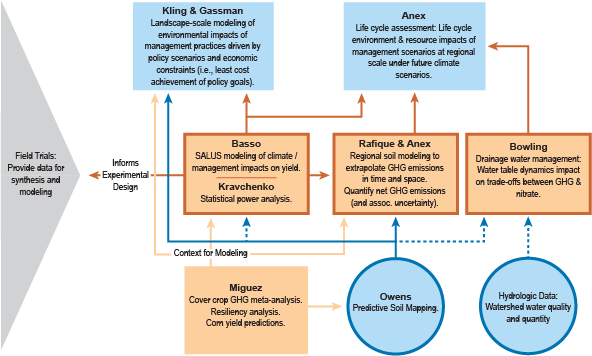Systems Analysis and Predictive Modeling
A key objective of our project is to utilize the field data we collect in local, regional and national scale models. The models examine current and predicted implications of particular crop management practices on carbon, nitrogen and water footprints, under different climate conditions and economic scenarios. These practices include no-till, extended crop rotations, drainage water management, cover crops and canopy nitrogen sensing.
Overview
Climate scientists agree that global changes are present now and will continue, but there is great uncertainty regarding the impact these global changes have on local and regional cropping systems. Scientists also agree that there is no single best climate model either for the globe or for a region (such as the Midwest). Therefore, it is necessary to consider a suite of climate scenarios to represent the expected range of plausible future climates.
Researchers are developing an analysis infrastructure to provide insight into the impacts and outcomes that will likely affect the sustainability and economic vitality of corn-based cropping systems. This infrastructure includes a database system to manage experimental data and a variety of physical and economic models capable of analyzing impacts at multiple scales...

Research Questions - Analysis and Modeling
Scientists and Staff Working on Analysis and Modeling
